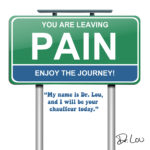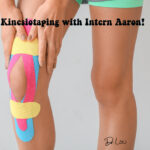Better Stretching with PNF! Hamstring Miracles Happen!
PNF Stretching: A Better Way to Stretch What is PNF? PNF stands for Proprioceptive Neuromuscular Facilitation and it’s an advanced form of stretching that is very effective for increasing your range of motion. How does it work? The stretching essentially involves 3 basic steps that can be applied to any muscle that needs stretching, especially before and after a physically demanding activity. The stretching utilizes reflexes in the muscles, as well as excitatory and inhibitory signals in the muscle being stretched, and the muscle opposing the stretch. You can think of it as stretching the involved muscle, then contracting the muscle without moving it, then stretching the target muscle again, increasing your range of motion. The technique has long been used by athletes across the world for improving flexibility quickly, safely, and very effectively. How do I do it? It’s easy. This stretching technique can be applied to any muscle! Just apply these steps. Step 1: Stretch the muscle as you normally would for about 6-10 seconds. Step 2: Relax the stretch, but now concentrically contract the muscle for about 6 seconds (flex the muscle without bending the joint). Step 3: Relax the contraction, but now re-stretch the muscle...
read moreChronic Pain: 5 Ways back pain Gets Worse.
5 consequences of untreated chronic pain in your back. Chronic Low back pain affects tens of millions of Americans every year. Chronic pain ruins work, vacations, family time, sleep, even marriages. Medications are expensive, often have bad side effects, and sometimes need to be taken forever. Drug addiction, depression, anxiety, as well as reduced quality of life, are all associated with chronic back pain. “Chronic” back pain is often considered to have been present for more than 12 weeks. Acute back pain is new pain. Acute pain, left to resolve itself, often becomes chronic pain. #nobueno Further Injury. Chronic Pain in our back leads to changes elsewhere in the body. Most people call this “compensation.” Our bodies are intelligent and they adapt and change to try to make you more comfortable, to keep things stable, and adapt for the best function and movement possible. As you can imagine, those changes lead to more changes. Think of it as a pebble rolling down a mountain that picks up other stones as it descends and can lead to an avalanche. Structural compensation due to back pain always involves changes in joint function and position. Long term changes joints and movement lead to...
read moreRestaurant Worker Stress. Causes and simple solutions.
The stress of the restaurant and Kitchen. Easy action steps for healing. Mental stress changes the chemistry of your body, and tightens your body’s tone. The kitchen is one of more mentally stressful work environments. You don’t need examples if you work in one. What is needed, is an understanding of why you feel the way you do and what you can do about it. Mental stress causes body chemistry changes like adding vinegar to baking soda. Inflammation and adrenaline are let loose throughout the body. KABOOM. If you are working under stressful conditions all week, your stress level doesn’t go down. Sustained mental stress puts fatigue on the adrenal glands, leading to a condition you’ve probably heard of….adrenal fatigue. You burn out, feel tired, sluggish, have difficulty sleeping, which cycles back around and creates a vicious cycle of more stress, more fatigue that causes more stress, and so on. Physically, your body tightens up from mental stress. Neck, shoulders and low back slowly seize. And that’s just from mental stress. The physical stress of standing, cooking, leaning, shuffling and the like, all make matters worse. Getting a bad night’s sleep also makes matters worse. The stress of the...
read moreCar Accident Chiropractor in Portland, Maine – WHIPLASH! HEADACHES!
After the car accident, things can get ugly. Most people will be in a car accident at some point in their lives. They happen fast, and if you are unlucky, in the wake of the impact, your body can feel like you were hit by a train. It is very common for symptoms to get worse before they get better, and sometimes symptoms are delayed. Chances are, you will have your damaged car looked at by a professional. You should do the same for your body. Even fender benders can cause whiplash, concussions (with or without head impact) and a host of other symptoms. What should you have checked on your body after a car accident? Your provider should check your neck for muscle, joint and nerve damage. They should check your head for signs of concussion, abnormal neurological changes, and for headache potential. Your arms, shoulders and upper back and spine should be checked for injury to the nerves, joints, and muscles from the impact. Gripping the steering wheel in a car accident often leads to hand, wrist, arm, shoulder and upper back injury. Your low back and pelvis, as well as your legs, should all be checked. Broken bones and...
read moreKinesiotape for performance, pain relief, and prevention. Athletes, Moms, Musicians.
DID YOU KNOW THAT JCA OFFERS KINESIOLOGY TAPING? What Is Kinesiology Taping & How Can It Help Me? You may have seen this before. Athletes running around town or competing in sports on television while wearing some sort of seemingly strategically placed black, or fluorescent tape on their skin. What is it? Kinesiology Taping, AKA elastic therapeutic tape, Kinesiotape, K-tape, KT, neuro-proprioceptive tape, or a number of other brand named tapes currently on the market are all similar. At this time, there are many brand names that all represent products that do the same thing. What does kinesiotape do? Kinesiotape has a variety of uses, but is largely used to lessen pain in sore and repetitively used areas of the body. It can also be used to increase the movement of fluids in the tissues (such as with swelling and bruises), improve static posture (how your body is positioned while still), lessen the effects of nerve entrapment, and improve dynamic posture (how your body moves around in your environment). Examples of problems that respond well to kinesiotape are: Shin Splints Shoulder strain and pain Knee pain and instability low back pain neck pain elbow pain and strain (tennis elbow/golfers...
read more




